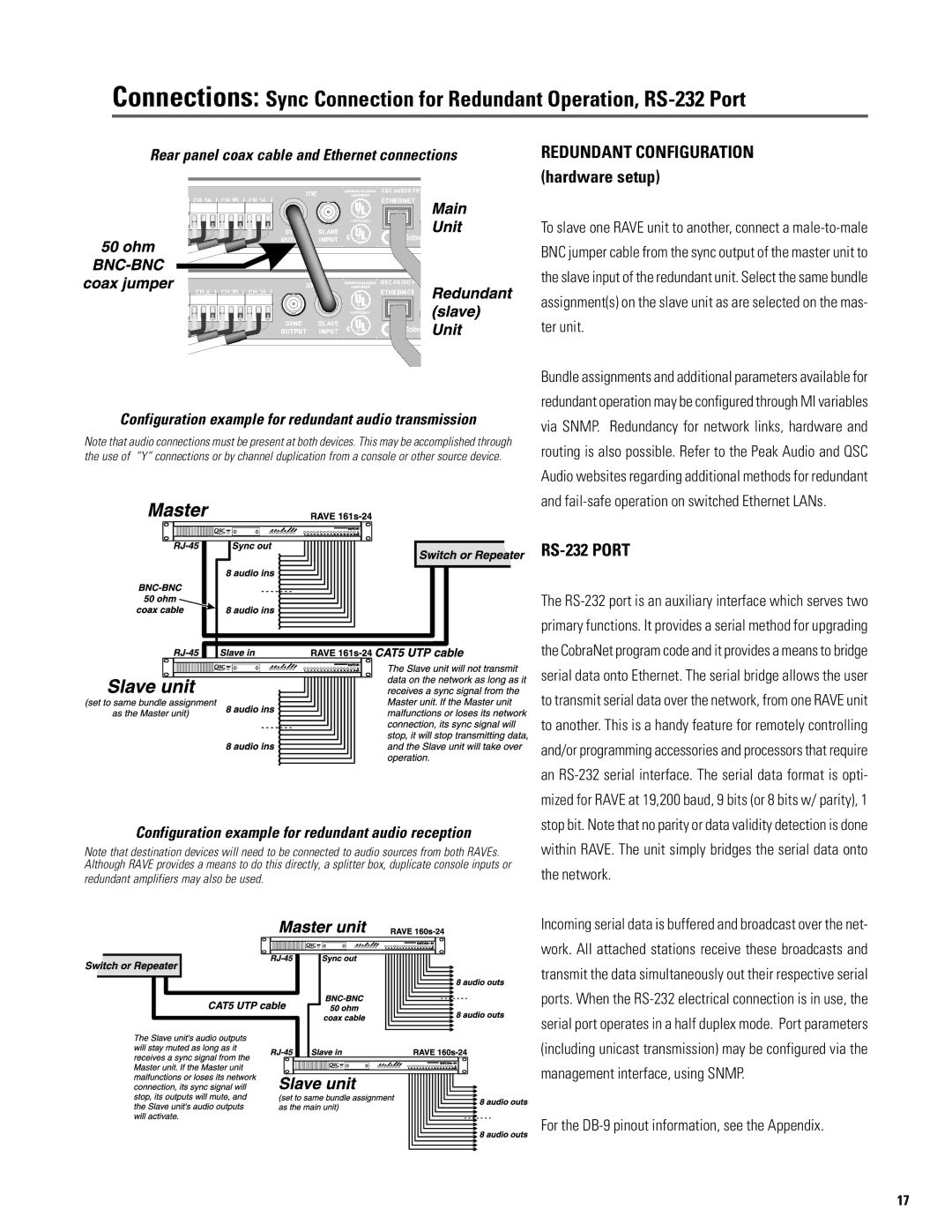
Connections: Sync Connection for Redundant Operation,
Rear panel coax cable and Ethernet connections | REDUNDANT CONFIGURATION | |
| (hardware setup) | |
| To slave one RAVE unit to another, connect a | |
| BNC jumper cable from the sync output of the master unit to | |
| the slave input of the redundant unit. Select the same bundle | |
| assignment(s) on the slave unit as are selected on the mas- | |
| ter unit. | |
| Bundle assignments and additional parameters available for | |
Configuration example for redundant audio transmission | redundant operation may be configured through MI variables | |
via SNMP. Redundancy for network links, hardware and | ||
Note that audio connections must be present at both devices. This may be accomplished through | ||
routing is also possible. Refer to the Peak Audio and QSC | ||
the use of “Y” connections or by channel duplication from a console or other source device. | ||
| Audio websites regarding additional methods for redundant | |
| and |
Configuration example for redundant audio reception
Note that destination devices will need to be connected to audio sources from both RAVEs. Although RAVE provides a means to do this directly, a splitter box, duplicate console inputs or
redundant amplifiers may also be used.
RS-232 PORT
The
Incoming serial data is buffered and broadcast over the net- work. All attached stations receive these broadcasts and transmit the data simultaneously out their respective serial ports. When the
For the
17
